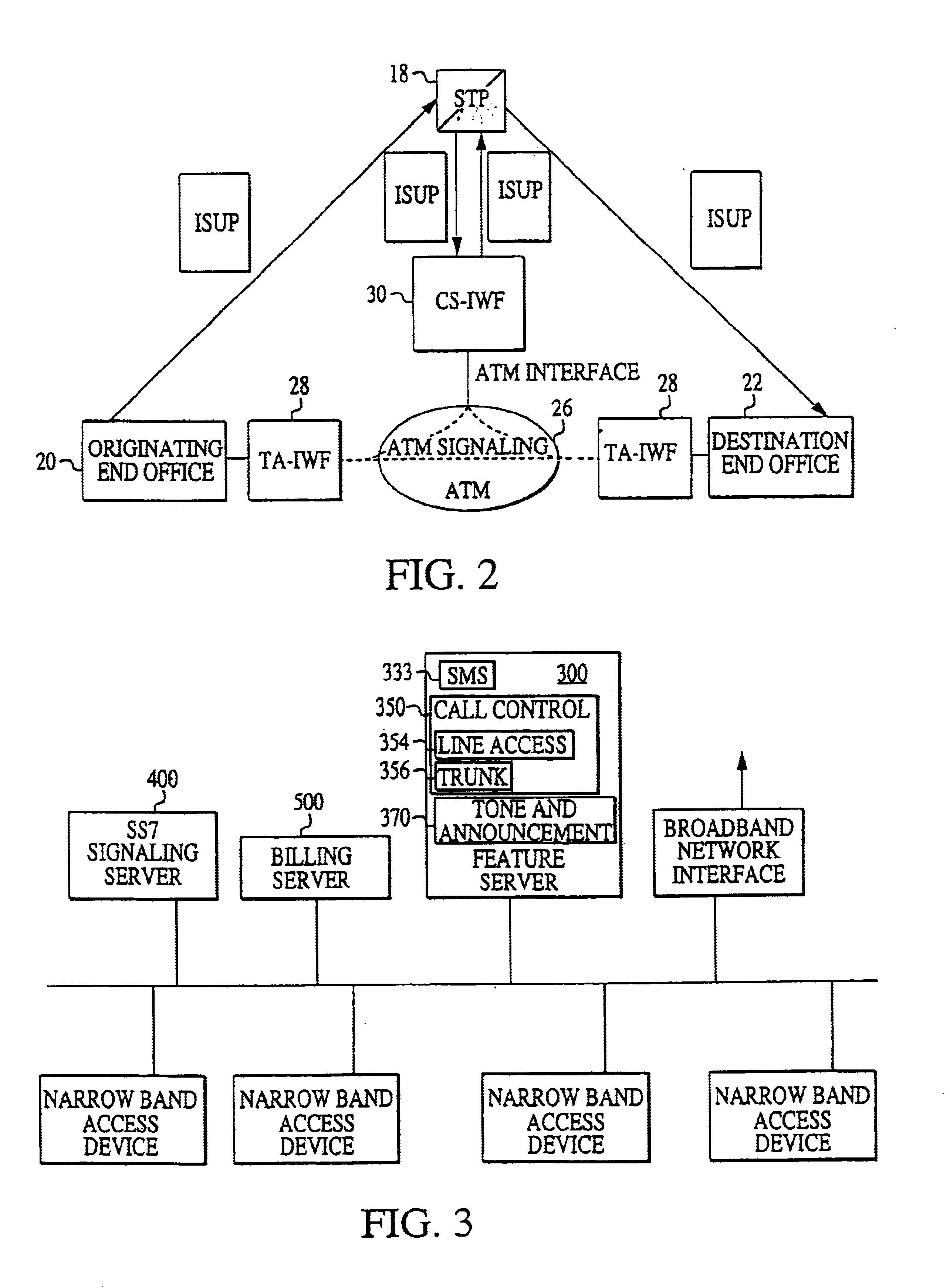ATM-based distributed network switching system
a distributed network and switching system technology, applied in the field of telecoms, can solve the problems of complex communication across the backbone, burdensome engineering and management, and the number of protocols operating within the network backbone, and achieve the effect of reducing the number of protocols and reducing the number of backbones
- Summary
- Abstract
- Description
- Claims
- Application Information
AI Technical Summary
Benefits of technology
Problems solved by technology
Method used
Image
Examples
Embodiment Construction
In view of the foregoing, the present invention is directed to providing an ATM-based distributed network switching system (ADNSS) to replace the standard network backbone. Such a system is streamlined and reduces necessary trunk groups without decreasing call processing volume. Moreover, the present invention enables residential and enterprise customer's desired access types to interface into the network.
According to the present invention a new architecture of voice switching, the ATM Based Distributed Network Switching System (ADNSS), is provided. The new architecture employs ATM technology as the network fabric, a server farm for call control and administrative functions, and edge devices that provide traditional and new types of access to the network. The distributed edge devices are referred to generically as access interworking functions (or A-IWFs). The network fabric includes a distributed partial mesh of ATM switches. The server farm consists of a signaling gateway, a call ...
PUM
 Login to View More
Login to View More Abstract
Description
Claims
Application Information
 Login to View More
Login to View More - R&D
- Intellectual Property
- Life Sciences
- Materials
- Tech Scout
- Unparalleled Data Quality
- Higher Quality Content
- 60% Fewer Hallucinations
Browse by: Latest US Patents, China's latest patents, Technical Efficacy Thesaurus, Application Domain, Technology Topic, Popular Technical Reports.
© 2025 PatSnap. All rights reserved.Legal|Privacy policy|Modern Slavery Act Transparency Statement|Sitemap|About US| Contact US: help@patsnap.com



